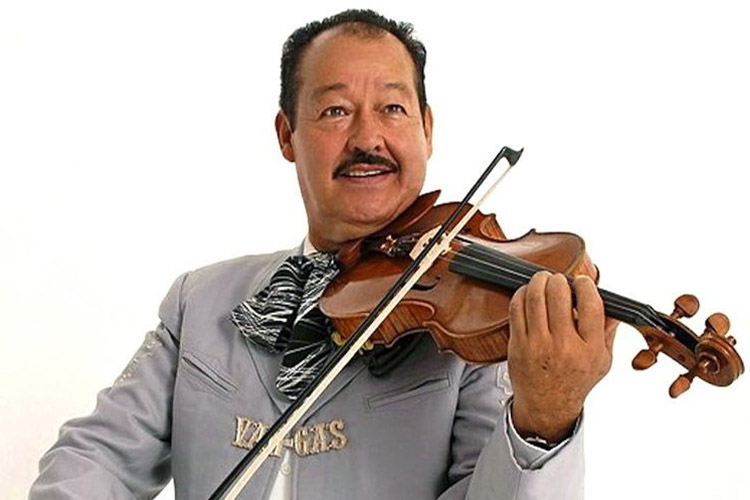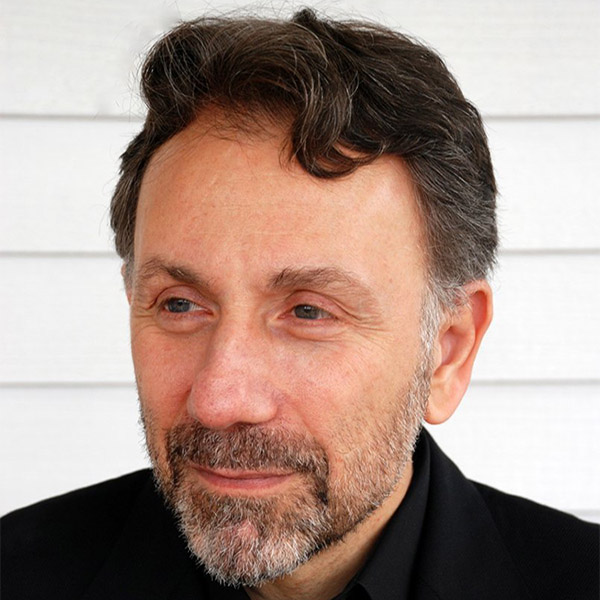
El Pasado Nunca Se Termina
Thank you for joining us for the Streaming for Students production of El Pasado Nunca Se Termina! Scroll down to access teacher resources created to help you get the most of out of the stream. We are grateful to our educational partner Chicago Marachi Project and Álvaro R. Obregón for their assistance on creating these resources.
Overview
On Mariachi
Musical Highlights
Composer and Librettist
On the Mexican Revolution
About Chicago Mariachi Project
Resources & further reading
Overview
On Mariachi
By Álvaro R. Obregón
President & Founder, Chicago Mariachi Project
Mariachi music is an art form. That is the basis by which Chicago Mariachi Project (CMP) was founded and one of our core beliefs. Although our art form has humble beginnings it has evolved, in some ways not unlike some forms of classical music. Who would dare listen to Béla Bartók, Antonín Dvořák, or Zoltán Kodály and dismiss their music as “just folk” or peasant music? CMP teaches its students that mariachi music has value too and as such is something that they should be proud of.
Mariache, or mariachi, is first referenced in the 19th century and has ties to the fandango and other popular forms of celebrations in México. Despite popular belief, it does not derive from the French word mariage (marriage). Another myth (referenced in the song "Cocula") is that the mariachi art form comes from the city of Cocula in the State of Jalisco. While this may be blasphemous to the jalisciense (people from Jalisco), what we know as mariachi actually developed in the Western part of México which includes the states of Michoacán, Nayarit, Colima, and yes, Jalisco, which many consider the current “capital” of mariachi music.
The original mariachi ensemble was quite small in the beginning and was not accepted in the large cities. It consisted of various instrumentations. One of the most common was a guitarra de golpe and two violines (violins). The guitarra de golpe was eventually replaced by the vihuela which provides part of the pulse in the rhythm section.
The arpa grande (“big harp”) is notable for the larger base of the soundbox. The arpa grande which has its roots in the State of Michoacán provided the bass as well as percussion where one player would play the strings while another would tap the base of the soundbox. Although some mariachi tradicionales (traditional mariachis) still play it this way, it is no longer used in the modern mariachi ensemble which now uses the slimmer arpa jalisciense from the State of Jalisco or the arpa veracruzana from the State of Veracruz because of their ability to change keys quickly through the use of levers. It is part of the armonia section and adds adornments. The guitarrón replaced the bass sound of the harp and while large is still much more portable than the harp.
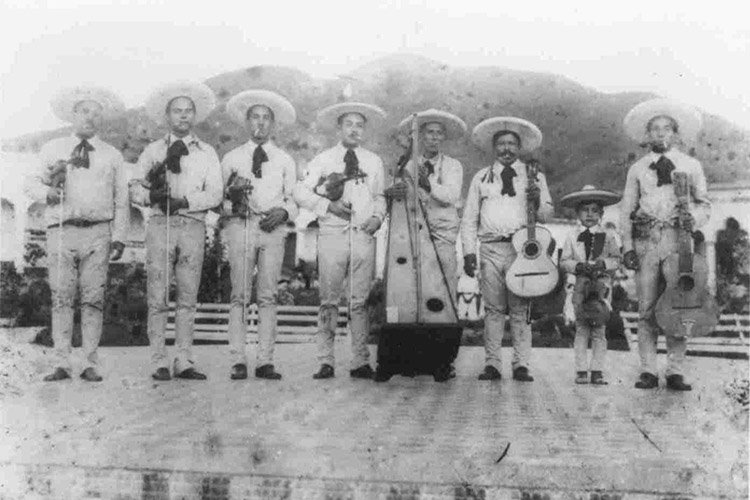
This is the first generation of Mariachi Vargas de Tecalitlán, created in 1897 by Gaspar Vargas. Here they are pictured with their traditional arpa grande and guitarra de golpe. The current generation of Mariachi Vargas de Tecalitlán is featured in the opera streaming of El Pasado Nunca Se Termina.
Rounding out the instrumentation of the mariachi, are the violines (violins), guitarra (nylon string guitar), and trompetas (trumpets). And speaking of trumpets, they were not part of the original mariachi. As the mariachi evolved, the trumpet was introduced in the earlier 20th century. No, that energetic and boisterous brass sound was not part of the original mariachi. In some ways, the early trumpet parts were also playing the same melody as the violins. It was not until Miguel Martínez improvised the way to play the trumpet that a new style was born and gave us what we know now as that very unique mariachi trumpet sound. He is considered the father of the mariachi trumpet.
Lastly is another element that we have come to identify with the character of the mariachi, the traje de charro (Mexican cowboy suit). A traje is an essential part of a modern mariachi. To call it a costume would be derogatory for it has come to symbolize not just the music ensemble but, in many regards, the visual representation of a country, of a culture and of a people. No one will ever associate a traje de charro with any other country but México.
But mariachi musicians did not always, and still do not exclusively use, the traje de charro. If one looks at early photographs of mariachis one will notice that many are dressed very simply in ropa de manta (simple farmhand clothes made of cotton). The clothes evolved much more rapidly as mariachis were leaving small towns and playing the big cities. Mariachis evolved by wearing a traje caporal (the dress of the ranch foreman) which consisted of pants, shirt and a bowtie. Ultimately different incarnations of the full traje de charro became the norm and was made to add an aesthetic touch to mariachi musicians by the broadcasting company XEW as they began to appear on television.
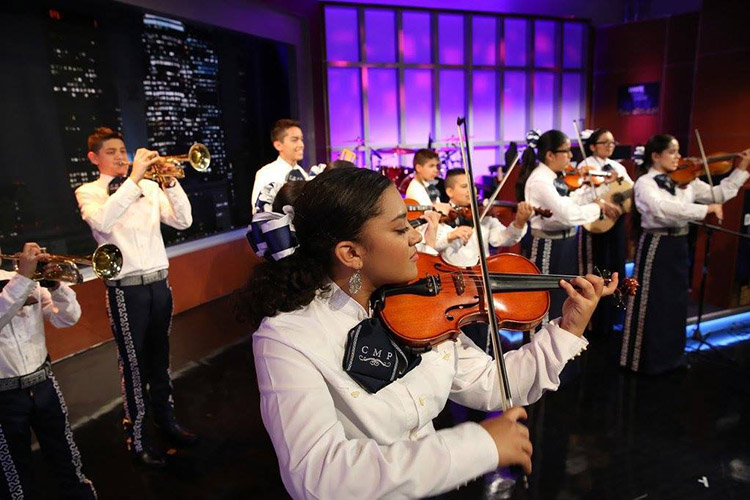
Musicians of the Chicago Mariachi Project pictured here in their traditional trajes de caporal.
Another significant development is the diversification of the mariachi ensemble. What was once almost exclusively male dominated now has integrated and all female ensembles. CMP prides itself in teaching the significance of mariachi history as it is important for students to know the development of the art form from the clothes they wear to the music they play. Beginning students perform in simple black pants/skirt and white shirts/blouses. Advanced students most often perform in their trajes de caporal symbolizing that close tie to their history and on special occasions they wear their traje de gala (the highest level of the traje de charro), a distinction they must earn. Additionally, CMP has also incorporated at times some of those rarely used instruments such as the arpa grande and guitarra de golpe into the classroom or stage. And a central tenet of our core beliefs is that music taught in the classroom should be age appropriate.
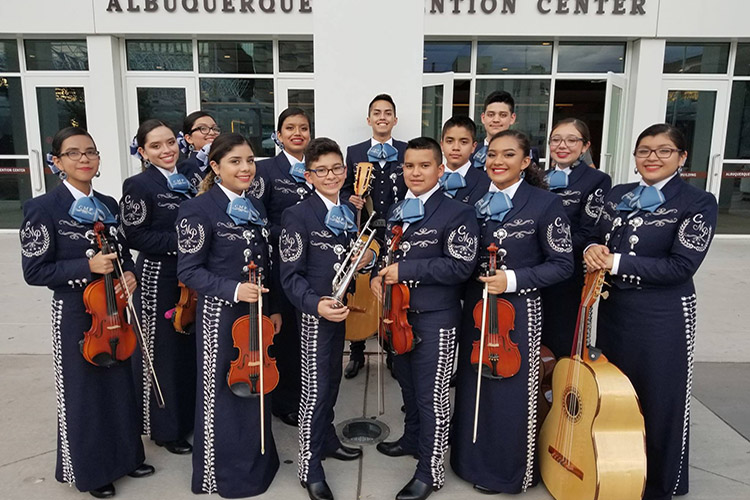
Musicians of the Chicago Mariachi Project pictured here in the highest level of traje de charro, known as traje de gala.
The best mariachi ensembles are classically trained. CMP insists on students learning to read music. Mariachi has evolved from rural México to the symphonic hall, and obviously, the opera stage. In fact, it is very common to see some of the world’s best mariachi ensembles performing alongside a classical music orchestra in México and around the world. To a large extent they can be considered small chamber orchestras and are extremely versatile performing different styles of music. Mariachi ensembles exist in places as far away as Asia and Europe. On November 27, 2011, mariachi was inscribed on the Representative List of the Intangible Cultural Heritage of Humanity by UNESCO.
Like Bartók, Dvořák, or Kodály they incorporate the music of the countryside and raise it to new levels. The modern mariachi ensemble is incredibly versatile and can adapt to different styles from waltzes and polkas to rancheras and everything in between. And as demonstrated in El Pasado Nunca Se Termina they are not relegated to the orchestra pit but are front and center and even have a starring role.
Scene 1: Las Estrellas, El Viento, El Fuego, La Tierra (The Stars, The Wind, The Fire, The Earth)
Style: Huapango
El Pasado Nunca Se Termina begins by introducing us to the “orchestra” for this opera - the mariachi. In addition to playing the instrumental accompaniment throughout the opera, the mariachi also often serve as supporting characters. In the case of the start of the opera, they serve as our narrator—setting the scene for the story to come.
What to listen for:
- Listen for the instruments you hear in the mariachi ensemble. How are they similar–or different–from a traditional opera orchestra?
- Las Estrellas, El Viento, El Fuego, La Tierra commences El Pasado Nunca Se Termina subdued in a minor key whereas many well-known operas begin more boisterous. Why would that be?
- Although the opening of the opera begins with that contradiction of science vs. belief (Halley’s Comet vs. “signs” in the sky), musically it begins with mysticism and includes reference to three of the four Mesoamerican elements (wind, fire, earth, water). Onstage is also an old man named Xihuitl which in the Nahuatl language means “fire.”
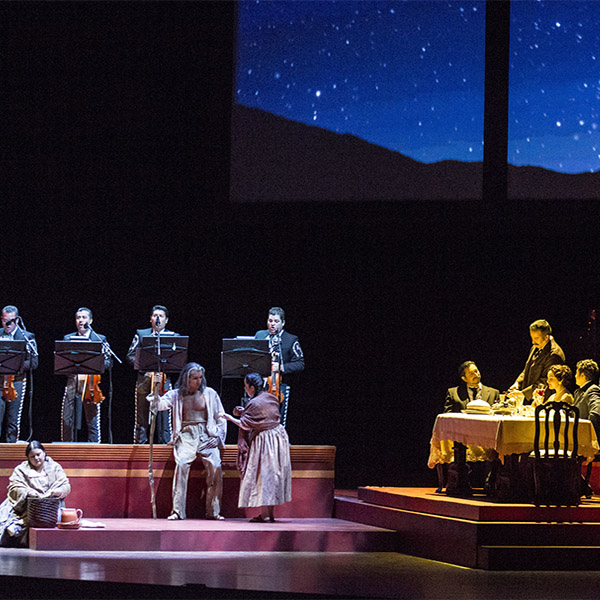
Scene 3: El Sueño de Amorita (Amorita’s Dream)
Style: Ranchera Valseada
Amorita and Juana are outside their hut making tortillas, when Amorita begins to tell her mother of her dream last night.
What to listen for:
- As Amorita describes her dream, her vocal line mimics the imagery she is describing. Rising and falling as she flies about, finally rising to its highest and sustaining when she says, “I could touch the sky.”
- The mariachi is playing a very European style of music most often associated with the City of Vienna. Can you identify it?
- A modern mariachi can be seen as a small chamber orchestra playing Western and Western-based instruments. World-class mariachi ensembles have incorporated waltzes in their repertoire for decades.
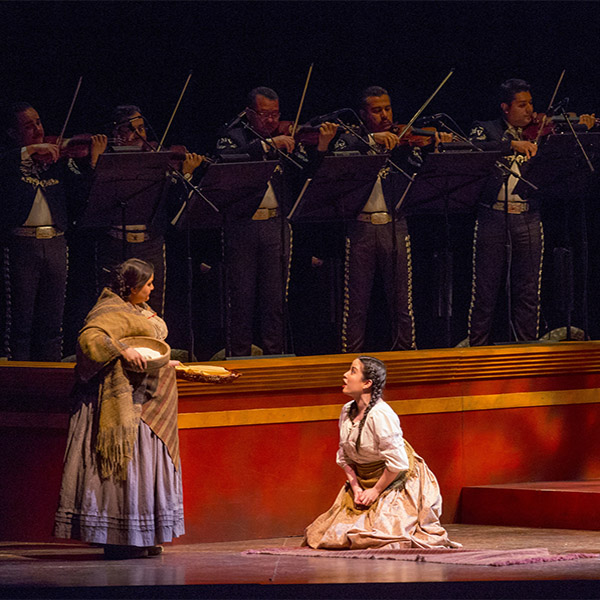
Sung by Amorita
Scene 6A: Ya Basta (Enough)
Style: Corrido
Acalán and the Mariachis have a tense exchange with Miguel, the administrator of the hacienda. Miguel leaves with a final warning that they all should be gone by morning. Acalán responds with a shout of, “Democracia y libertad!” (Democracy and freedom!)
What to listen for:
- In this scene the mariachi is playing dual roles of musicians as well as a supporting acting role as members of the revolutionary forces. The music is based on the corrido which was very popular during the Mexican Revolution and continues to be so today.
- The corrido is a storytelling song which almost always recounts a person(s) or an event. In some cases, a corrido can be about an animal which is often given human like characteristics (loyalty, ferocity, etc.) or the owner’s love for the animal.

Sung by Acalán, Mariachis
Scene 8: Mi Hijo (My Son) - reprise
Style: Bolero ranchero
Amorita and Juana have just buried Acalán. Augustino and Isabel have buried Luis. They are at their respective gravesites when Isabel and Juana sing this mournful duet. This scene is a turning point in the opera as it serves as the bridge from the time of the Mexican Revolution to modern day.
What to listen for:
- As with many moments in this opera, this duet highlights the juxtaposition of the workers and owners of the hacienda. What differences and similarities do you notice between Isabel and Juana? How would you describe the “timbre” (the character or quality) of each singer?
- The mariachi is playing a bolero ranchero. The bolero that Mexicans, and most Latin Americans, are most accustomed to nowadays is based on the bolero that evolved out of Cuba. It always evokes deep emotions. It can be very romantic or very sad. The trumpets accompanied by the armonía, or rhythm section, introduce Enrique.
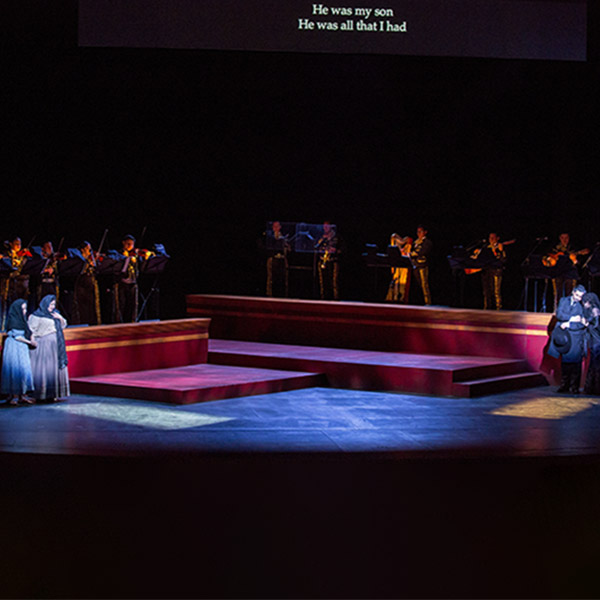
Sung by Isabel and Juana
Scene 10: El Ritmo de México (The Rhythm of Mexico)
Style: Huapango
Outside the hotel, the mariachi musicians are on a break. Daniel is walking by with his earphones on when he is interrupted by one of the musicians, Pepe. Daniel asks about the different kinds of guitars in the ensemble, which prompts Pepe to introduce the various instruments and their function as they build to a lively and exciting finish.
What to listen for:
-
El Ritmo de México is written in a huapango style. The huapango comes from the Eastern region of México known as “la huasteca.” The region is named so for the Huastec, the indigenous people that inhabited the area. La huasteca is comprised of whole or parts of the modern States of Veracruz, San Luís Potosí, Hidalgo, Tamaulipas, Puebla, Querétaro, and Guanajuato.
-
El Ritmo de México is intentionally written in the huapango style as an homage to Violín Huapango, a classic composition by José “Pepe” Martínez, the music composer for El Pasado Nunca Se Termina. Some consider Violín Huapango as Martínez’s magnus opus and you can hear its influence especially in the instrumental calls and responses of the trumpets.
-
Can you identify the different instruments of the modern mariachi ensemble? They are (in the order they are identified in the opera): guitarra (classical guitar), vihuela, guitarrón, arpa (harp), violín and trompeta (trumpet). It is important to note that the original instruments of the mariachi were simply the guitarra de golpe and violins. The original harp that was used was the arpa grande which originated in the State of Michoacán. That original harp provided the bass and was also used as a percussion instrument. Today, the modern mariachi typically uses either the arpa jalisciense (originating from the State of Jalisco) or the arpa veracruzana (originating from the State of Veracruz) mostly out of convenience because they use levers that allow them to change keys quickly.
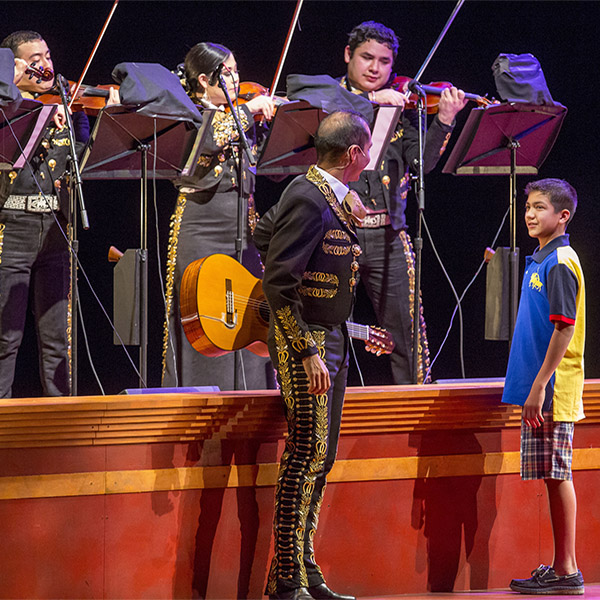
Performed by the Mariachis
Scene 12: El Pasado Nunca Se Termina (The Past is Never Finished)
Style: Polka
The finale of the opera brings the characters of the past and present together as the entire company sings, “The past is never finished. We carry it all inside us. We are born to begin the next chapter in this never-ending story.”
What to listen for:
- El Pasado Nunca Se Termina concludes with another very European style of music. Can you identify it? The mariachi is playing a polka! The polka originated in Central Europe as a very lively Czech folk dance. It is also commonly associated with other places such as Poland and Germany. The polka is very prominent in the norteño and conjunto music of Northern Mexico and the border areas of Texas.
- Like the waltz, mariachi ensembles such as Mariachi Vargas de Tecalitlán and Mariachi México de Pepe Villa, among others, have recorded entire albums to these styles of music.
- What connection do the people from Central Europe have with Chicago? Many people from Central Europe emigrated to Chicago and founded some of our City’s oldest neighborhoods such as Pilsen. The neighborhood which is currently majority Mexican was named after Plzeň, a city in the modern Czech Republic. The next time you are in Pilsen take a look at the architecture. You may be transported to Central Europe.
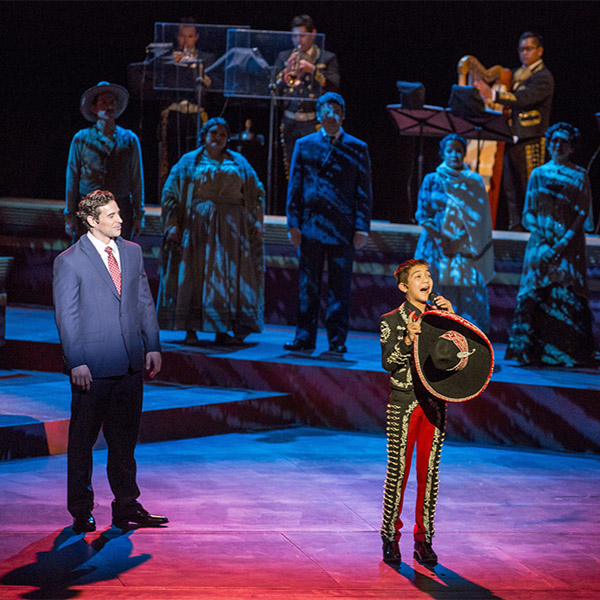
Sung by Daniel, Enrique, Entire company, Mariachis
On the Mexican Revolution
By Álvaro R. Obregón
President & Founder, Chicago Mariachi Project
Few things evoke such romanticism, and passion, in a mexicano as the Mexican Revolution. While the mexicano is moved by key events in our history from the pride of our Mesoamerican cultures, the apparition of Our Lady of Guadalupe, and Mexican Independence, it is the Mexican Revolution which has been the inspiration of countless songs and movies in our popular folklore. Many of these creations while based on actual events often contain overly romanticized tales.
What mexicano has not grown up with Antonio Aguilar movies and/or the various tales of love in the time of revolution? What mexicana has not been inspired by the photographs of the soldaderas (female revolutionary soldiers)? But the Mexican Revolution was a very bloody time in our history. At its onset in 1910, México had a population of 15 million people. Estimates of the body count fall anywhere from 1-2 million dead by the time that the revolution had concluded in 1920. To put that in a modern context, that would be like losing the entire population of Texas or California today.
During the late 1800’s México experienced a growth in infrastructure (railroad lines, lending institutions, etc.) through foreign investment mostly. This came about during the time of Porfirio Díaz who ruled México for one-third of a century! What México gained in one area, it suffered at in others: malnutrition, childbirth deaths, unemployment, and an 85% illiteracy rate by 1910 gave rise to Mexican Revolution.
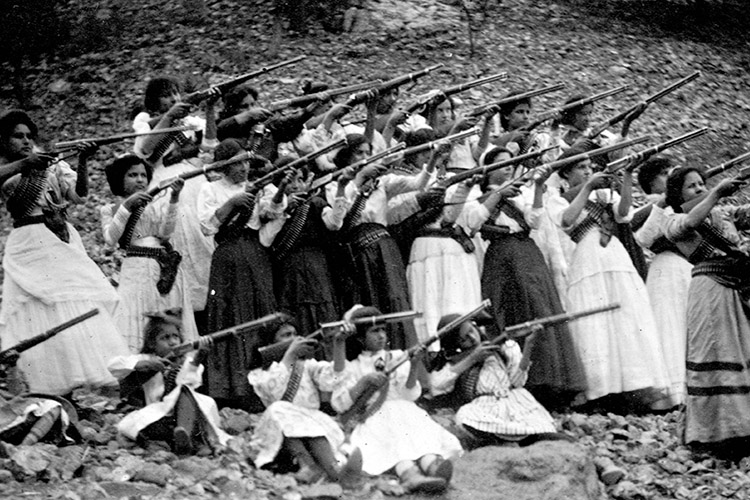
Soldaderas were female soldiers during the Mexican Revolution.
Figures like Francisco “Pancho” Villa and Emiliano Zapata are thought of as the main characters of the Mexican Revolution but they have become overly romanticized in popular folklore when in reality they are complex and, in many ways, contradictory characters. Focusing solely on these two important people does not begin to tell the complete story and complexity of that period. To tell a more comprehensive story, one needs to recount not just agrarian reform but the struggles of the metropolitan activists who were sometimes at odds with the rural revolutionaries. One would need to begin with Francisco I. Madero but include the Constitutionalists Venustiano Carranza, and Álvaro Obregón who would need to begin to bring this period to a close to stop the endless bloodshed, through his presidency.
This summary should help provide context for the storyline of El Pasado Nunca Se Termina which you are about to see. It begins a few months before the official start of the Mexican Revolution.
About Chicago Mariachi Project
The award-winning Chicago Mariachi Project (CMP) is a federally registered 501(c)(3) nonprofit organization whose mission is to elevate the Art of Mariachi and promote excellence in musicianship through education, coordination and support. Through the longstanding efforts of its founders, CMP has been credited with having formally kicked off the mariachi education movement in Chicago. CMP currently runs the longest standing after-school and in-school programs in Chicago Public Schools as well as a prestigious Mariachi Academy with students from the Greater Chicagoland area. It provides workshops and master classes for mariachi students.
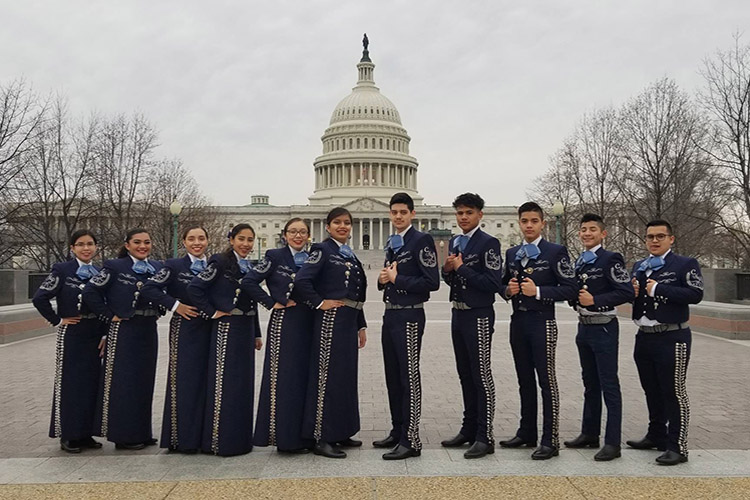
In 2019, Chicago Mariachi Project became the first student mariachi to perform in the halls of Congress.
CMP were the first Chicago student mariachi ensemble to tour nationally. They have opened for world renown artists such as two-time Grammy Award winning Mariachi Los Camperos de Nati Cano, two-time Grammy Award winning Mariachi Divas de Cindy Shea, Mariachi Nuevo Tecalitlán, Mariachi Vargas de Tecalitlán, and Tlen Huicani among others throughout Chicagoland, Milwaukee, Albuquerque and Los Angeles.
In 2017, CMP students were awarded First Place in the High School Category and Third Place Overall at the 27th Annual Mariachi Spectacular de Albuquerque, a national competition!
For more information on CMP, please visit their social media pages:
Facebook: www.facebook.com/chicagomariachiproject
Instagram: www.instagram.com/chicagomariachiproject
Twitter: www.twitter.com/chimariachiproj
About Álvaro R. Obregón
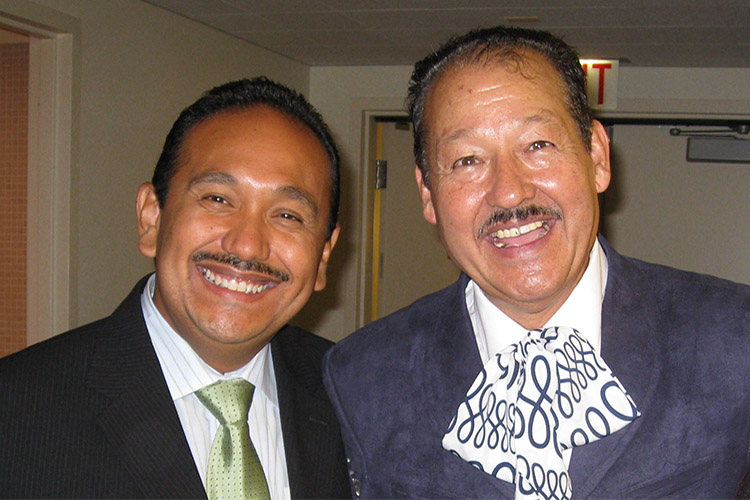
Álvaro R. Obregón, President and Founder of Chicago Mariachi Project, with José “Pepe” Martínez, composer of El Pasado Nunca Se Termina.
Mr. Obregón is the Founder and President of the Board of Directors Chicago Mariachi Project (CMP), a 501(c)(3) nonprofit organization whose mission is to elevate the Art of Mariachi and promote excellence in musicianship through education, coordination and support. As such, he serves as CMP’s General Director. Mr. Obregón is a strong advocate for education, arts & culture.
Mr. Obregón serves on the Board of Directors of the Grammy Award & Latin Grammy Award nominated Sones de Mexico Ensemble and has served on the Chicago Symphony Orchestra's Community Advisory Council, its Board of Trustees (Executive Committee), and Board of Directors of its Negaunee Music Institute; as well as the Board of Directors for Mexican Dance Ensemble.
Additionally, Mr. Obregón helped lead the process for a 5 Year Strategic Plan for Education in Chicago’s Pilsen community; was a member of the Cooper Dual Language Academy and Benito Juárez Community Academy Local School Councils; and has helped to create music education and arts programs in schools. Mr. Obregón has presented on mariachi history, music, and culture at the Illinois Music Education Association’s Annual Conference and UNAM Chicago (National Autonomous University of México, Chicago Campus).
Mr. Obregón was a core member of the official México 2010 Committee celebrating the bicentennial and centennial of México’s Independence and Revolution respectively in Chicago whose activities included the inauguration of the Benito Juárez Community Academy Visual and Performing Arts Center by the full Chicago Symphony Orchestra, regarded as one of the top 5 orchestras in the world, as well as the CSO’s first tour of México in 2012 under the helm of its Music Director Riccardo Muti. Mr. Obregón joined the CSO on its historic first tour of México.
Mr. Obregón was awarded the prestigious Bank of America Neighborhood Excellence Initiatives’ 2005 Local Hero Award, the Outstanding Citizen Award from the Illinois Association of Chiefs of Police, and the City of Chicago Commission on Human Relations Advisory Council on Latino Affairs Hispanic Heritage Award 2010.
Resources & further reading
Cockcroft, James D. 1983. Mexico.
Gradante, William. 2008. Foundations of Mariachi Education. R & L Education.
Katz, Friedrich. 2003. The Secret War in Mexico.
Krauze, Enrique. 1998. Mexico. Harper Perennial.
Ochoa Serrano, Álvaro. 2013. Manual Del Mariachi. Secretaria de Cultura - Gobierno de Jalisco.
Ochoa Serrano, Álvaro. 2018. Mitote, Fandango y Mariacheros (5a. Edición). El Colegio de Michoacán A.C.
Sheehy, Daniel Edward. 2006. Mariachi Music in America. Oxford University Press, USA.
Prodution photos are from Lyric's 2014/15 production of El Pasado Nunca Se Termina (Todd Rosenberg).
All other photos provided by Chicago Mariachi Project.
